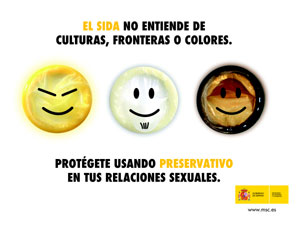Wherever you are from, you know what irony, happiness, sadness or anger is. Words change according to a country, but feelings keep being the same. They are universal because we are human beings (except the majority of politicians and the fauna of yellow press). As Aristotle´s said, a person is a zoon politikon, we want someone to know our feelings and emotions. I’m not being philosophic; I want to translate this into Internet´s interaction and participation terms. When we write a comment, it is common to be interested in give expression to an emotion in order to avoid misunderstandings or intensify what you said. What would you do in this case? You’ll use an emoticon.
This smiley face was created by Scott E. Fahlman in 1982. By this year, there were problems to know if someone that posted a message on the Carnegie Mellon online bulletin wanted to be serious, ironic or funny. That was the birth of the J and L idea, then came the explosion of this phenomena in chats, forums, social networks…anything implying some kind of feedback! Some of these pictures have developed beyond its yellow faces and have specialized in specific social networks, like the image of the “Like Button” in Facebook, Tuenti´s icon or the (now forgotten) place where they became famous: Messenger. An emoticon worths more than a thousand words and helps the user to be interpreted in the best way. Let´s have a look to this conversation:
If Yaiza had not written an XD, Jo would have been offended, because she didn’t know that it was in a good sense. The XD emoticon is probably the most versatile one, because it means happiness, auto depreciation, LOL (Laughing Out Loud), to blaspheme and is a good way to avoid reading never-ending messages and stay like you’ve done it. A written “XD” in the right moment can save your life. I wish I could put a face like this.
Some time ago I read an article in El PAÍS about how emoticons are utilized in marketing campaigns. Commercial firms like Dan'Up, Pokémon, Veas, Tampax, Coca-Cola, Sony Ericsson, Emi Record, Nestlé, Johnson & Johnson, Durex, BMW, Xbox, Fanta, Sony PlayStation, Peugeot and Danone use them in their products. As you can observe, these goods are destined to a young market segment because of their constant use.


The Spanish Government also resorted to them in order to prevent the spread of AIDS.


We still prefer express ourselves in an analogical way than in a digital one, but the point of the Digital era is not only to be closer to reality, but expand its possibilities. Despite the fact that emoticons keep the same (or similar) in a global sphere, a challenge like unify all languages in an Internet one is an excess. I know that its “global” essence makes the necessity of creating something able to beat this “Babel Tower

No hay comentarios:
Publicar un comentario